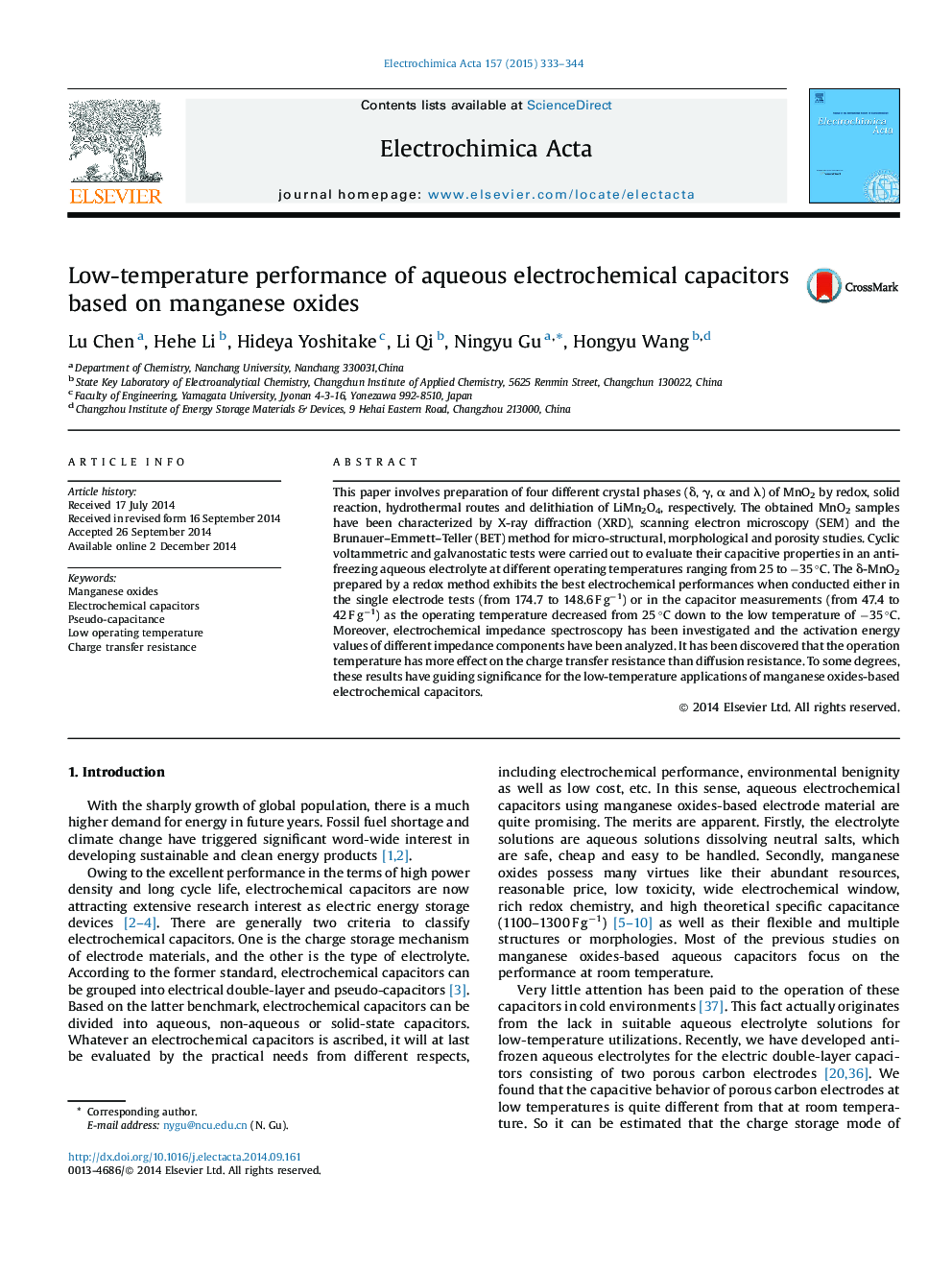| Article ID | Journal | Published Year | Pages | File Type |
|---|---|---|---|---|
| 184648 | Electrochimica Acta | 2015 | 12 Pages |
•Low-temperature electrochemical behavior of MnO2 with 4 different crystal structures was investigated.•The δ-MnO2 exhibits the best electrochemical performances at low temperature.•The operation temperature has more effect on the charge transfer resistance than diffusion resistance.
This paper involves preparation of four different crystal phases (δ, γ, α and λ) of MnO2 by redox, solid reaction, hydrothermal routes and delithiation of LiMn2O4, respectively. The obtained MnO2 samples have been characterized by X-ray diffraction (XRD), scanning electron microscopy (SEM) and the Brunauer–Emmett–Teller (BET) method for micro-structural, morphological and porosity studies. Cyclic voltammetric and galvanostatic tests were carried out to evaluate their capacitive properties in an anti-freezing aqueous electrolyte at different operating temperatures ranging from 25 to −35 °C. The δ-MnO2 prepared by a redox method exhibits the best electrochemical performances when conducted either in the single electrode tests (from 174.7 to 148.6 F g−1) or in the capacitor measurements (from 47.4 to 42 F g−1) as the operating temperature decreased from 25 °C down to the low temperature of −35 °C. Moreover, electrochemical impedance spectroscopy has been investigated and the activation energy values of different impedance components have been analyzed. It has been discovered that the operation temperature has more effect on the charge transfer resistance than diffusion resistance. To some degrees, these results have guiding significance for the low-temperature applications of manganese oxides-based electrochemical capacitors.
Graphical abstractFigure optionsDownload full-size imageDownload as PowerPoint slide
